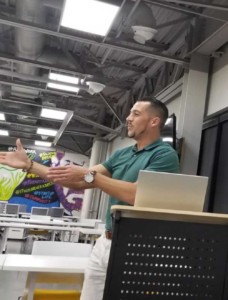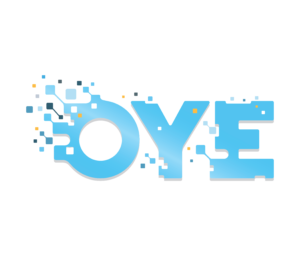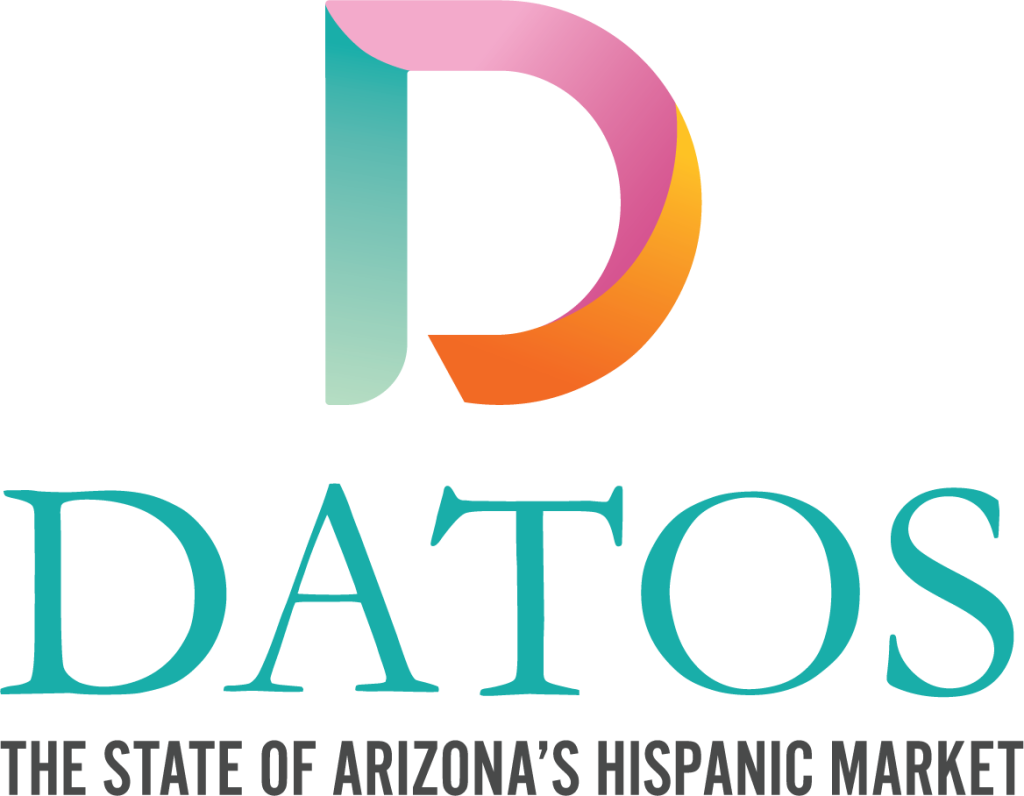ediaz33

Hello. Nice To Meet You!
My name is Eric Diaz. I am a Phoenix area business owner in the Marketing/Advertising Industry. I own Coworking on 15th Ave in central Phoenix as well.
I lead the Nativa Multicultural Marketing team by focusing on the needs of the client in order to deliver the best long-term solutions.
I credit my years working across continents for Staples, Inc. as the guiding path to my project management ability. To stay on top of the newest trends in multicultural marketing, I participate in online conversations, research best practices, and industry trends, and discuss the newest wrinkles in marketing, advertising, and digital strategies.

NATIVA MULTI-CULTURAL
Nativa is a multicultural marketing agency that focuses on using data-driven insights to guide the development of digital communications strategies, content marketing, and online advertising.
Founded in 2008, Nativa brings measurable, effective digital work to large national clients including Centers for Disease Control and Prevention (CDC), Charmin Toilet Paper, Fox Broadcasting, Henkel (Dial Soap, Tone Skincare, Got2b, Schwarzkopf), Arizona State University, and many more. The Nativa corporate headquarters is located in the heart of downtown Columbus, Ohio. Nativa expanded to Arizona in 2011 to offer their services in this market from their office near downtown Phoenix.
Eric serves as President for this multicultural digital agency.
Holiday Properties
As a business owner in the Phoenix area with extensive experience in renting vacation properties, I take great pride in offering accommodations that our guests truly appreciate. With meticulous attention to detail, my goal is to ensure that your stay is both enjoyable and comfortable. Whether you seek dining recommendations, late check-outs, or amenities like changing tables and pack-and-plays for kids, just let us know – we’re here to accommodate your needs.
My wife, Katelyn, and I have dedicated ourselves to enhancing the decor and amenities of our rental properties, catering to both couples and families. We find immense joy in being a part of our guests’ experiences here in our vibrant city. From suggesting the best restaurants to visit to recommending scenic mountains to explore, we’re always eager to share insights on making the most of your time here.


STATISTICS PROFESSOR
Founded in 1920, Phoenix College (PC) is one of the oldest community colleges in the country. Phoenix College is the flagship of the Maricopa Community Colleges, a district that ranks as one of the nation’s largest community college systems and the single largest provider of higher education and career training in Arizona.
Eric, an adjunct statistics professor at Phoenix College, expands his role to educate 20 learners on the business applications of social media and emerging Web 3.0 technologies, including artificial intelligence. Through case studies, students explore real-world scenarios, while actively engaging on social media platforms to understand ethics, privacy, and security issues. With over 90% approval ratings in his first year, Eric looks forward to continuing his partnership with Phoenix College, empowering students for success in the digital age.
O.Y.E. BUSINESS INTELL-IGENCE
O.Y.E. is a data analysis solution that analyzes, monitors, and reports online conversations among multicultural consumers offering brands and organizations a unique opportunity to develop culturally-relevant communication strategies. Eric serves as Chief Financial Officer for the growing business intelligence software platform.


COWORKING ON 15TH AVE
Coworking is a style of work that involves a shared working environment, often an office, and independent activity. Unlike in a typical office environment, those coworking are usually not employed by the same organization.
Coworking on 15th Ave was created for hard working people to get the job done without having to miss out on social interaction. Our mission is to provide workspace for entrepreneurs from all fields, who enjoy working in a collaborative environment conducive to a healthy lifestyle.
Eric is owner of Coworking on 15th Ave.
DATOS Board
Datos is a leading Hispanic market research publication and event, dedicated to providing invaluable insights into the expanding Hispanic market landscape. With a focus on proprietary data analysis, we equip businesses with the knowledge needed to navigate this dynamic environment successfully.
Our mission is to empower clients to make informed business decisions and develop culturally relevant communications strategies tailored to the needs of the fastest-growing ethnic group in the United States. Through our comprehensive research and events, we aim to facilitate meaningful connections and drive success in the Hispanic market.

Bio and Pics
Ediaz33 Bios





Option A (200 Words): Nativa Focus
Eric Diaz is a business owner and entrepreneur in the Marketing/Technology industry. Eric began his career working across the United States and China for Staples, Inc., which strengthened his project management abilities and allowed him to engage with multicultural audiences.
Following his work at Staples, in 2008, Eric founded Nativa, a multicultural communications agency that focuses on underserved communities through digital marketing and culturally relevant content creation. Nativa brings measurable work to large national clients, including the Centers for Disease Control and Prevention (CDC), Carmax, Charmin, Henkel, Arizona State University, and more.
In 2014 Eric Diaz co-founded O.Y.E., a business intelligence SaaS company that provides multicultural segmentation
via social media sources for clients both nationwide and internationally.
The platform allows clients to make educated business decisions and develop culturally relevant communications with hard-to-reach audiences and ethnicities across the U.S.
In 2013 Eric opened a shared office space, Coworking on 15th Ave, which supplies affordable office space to 20 members of the central-Phoenix small business community.
Additionally, Eric has developed and currently teaches two Social Media courses at Phoenix College, a historically Black and Hispanic serving institution.

Option B (150 Words): OYE Focus
Eric Diaz is Co-founder for OYE! Business Intelligence which is a platform that segments and monitors real-time online multicultural conversations allowing clients to make educated business decisions and develop culturally relevant communications with the fastest growing ethnic groups in the U.S. OYE!’s work includes ongoing analysis for Fortune 100 brand MassMutual as well as for the largest public higher education provider in the nation, Arizona State University. Other well-known clients include Big Lots, Got2b, Kroger, Schwarzkopf and White Castle.
Eric has worn many hats throughout his professional career. He spent parts of 2007 and 2008 in Shanghai, China’s economic capital, serving an important supply chain development role to support exponential company growth in the region for Staples, Inc., a Fortune 500 retailer. Eric completed his Masters Degree in Finance at Northeastern University in Boston, obtained a Marketing degree from The Ohio State University and has a passion for helping people.

Option C (117 Words): Nativa/OYE Focus
No other person in the office loves Mondays as much as Eric does. The Co-founder of both Nativa and OYE leads these teams by focusing on the needs of the client in order to deliver the best long-term solutions. He credits his years working across continents for the corporate giant Staples, Inc. as the guiding path to his strong project management ability. To stay on top of the newest trends in multicultural marketing, Eric participates in online conversations, researches best practices and industry trends, and discusses the newest wrinkles in marketing, advertising, and digital strategies. A veteran of several traditional cubicle-farm office environments, Eric enjoys the fact that he can finally justify spending his day on Instagram.

Option D (49 Words): Nice and Tight
Since 2010, Eric has been a Partner at Nativa Multicultural Communications. In 2014 he co-founded O.Y.E. Intelligence, a software that segments online multicultural conversations allowing clients to develop culturally relevant communications with hard-to-reach communities. Eric owns Coworking on 15th Ave and teaches business statistics at Phoenix College as well.
Awards & Press
Recent Speaking Events for Eric Diaz:
Eric is often asked to speak at forums both nationally and in his local Phoenix. Recent conversations Eric has been a part of include:
2023 – A.I. Masterclass
2023 – Hustle PHX Entrepreneurial Speaker
2021 – Brillante Award for Entrepreneurial Excellence – Prospanica
2021 – AMA Spectrum Award – Excellence in Multicultural Marketing
2021 – Master Class – Stay True to You While Working with Brands
2020 – Racial Equality and Corporate Diversity – Are Businesses Walking the Talk?
2020 – Real Investment or Cheap Talk: Company Response to the BLM Movement – Collectivo Podcast
2019 – Diverse Founders Forum at SWSX – Austin, TX
2019 – Latinx Influencer Workshop Movement – Phoenix, AZ
2019 – Corporate Diversity – Do they Walk the Talk? – Phoenix, AZ
2019 –Key Online Multicultural Leaders at CES – Selection by Southwest Airlines – Las Vegas, NV
2018 – Nationwide Insurance Business Solutions podcast – Columbus, OH
2018 – Diferente: Social Media Future & Why Diversity is under Attack podcast – Miami, FL
2018 – The Big Pitch at CEI – Featured Speaker on Marketing/Advertising – Phoenix, AZ
2018 – YEA (Young Entrepreneurs Academy) CEO Panel – Phoenix, AZ
2017 – Startup Street Pitch Winner for OYE Intelligence software – Phoenix, AZ
2017 – LatinX Movers & Marketers at Collectivo – Phoenix, AZ
2017 – College Success Arizona Symposium – Keynote Speaker – Phoenix, AZ
Articles of Note:
Eric is outspoken about the importance of diversity in corporate environments. He is a frequent writer on racial equality topics, including the following, which all can be found here: https://www.linkedin.com/in/ediaz33/detail/recent-activity/posts/
We are not your Tokens
Diversity in 2018: Now as Important as Ever
Why ‘Hector from Accounting’ Is Not Your Hispanic Marketing Department
Do We Need a Hispanic Track at Phoenix Startup Week?
This is What Happens When You Post a Spanish Job Ad in Phoenix
Authorship of Eric Diaz:
Eric is an author on numerous channels including:
Nativa Multicultural Communications – http://thenativa.com/blog/author/diaz/
OYE Business Intelligence – https://oyeintelligence.com/author/diaz/
LinkedIn – https://www.linkedin.com/in/ediaz33/detail/recent-activity/posts/
Ediaz33.com – http://ediaz33.com/
HispanicPRBlog – http://www.hispanicprblog.com/author/ericdiaz/
Arizona Latinos – http://www.arizonalatinos.com/?s=%22By+Eric+Diaz%22
Awards presented to
Eric Diaz:
Eric is very active on the national marketing & advertising scene, traveling in 2019 to be part of the CES conference in Las Vegas and SXSW in Austin, TX. Several recent awards he has won are listed below:
2021 Brilliant Award for Entrepreneurial Excellence – Prospanica
2019 Diverse Founders Panelists at SXSW – Selection by Southwest Airlines
2019 Key Online Multicultural Leaders at CES – Selection by Southwest Airlines
2017 AMA Spectrum Awards – Excellence in Multicultural Marketing
2017 Inaugural Startup Week Street Pitch – $50,000 First Prize for OYE Social Listening Technology
2016 ALPFA 4 Under 40 – co-founder Eric Diaz, Phoenix, AZ
2016 United States Hispanic Chamber of Commerce (USHCC) BizPitch Winner
Presentations
2019 Phoenix Business Journal Small Business Award
2018 Podcast – Diferente: Social Media Future & Why Diversity is under Attack
2017 Inaugural Startup Week Street Pitch – $50,000 First Prize for OYE Social Listening Technology

Press
AZ Tech Connect – Meet Eric Diaz – http://aztechconnect.com/meet-eric-diaz/
Business Journals – 29 articles mentioning Eric Diaz – https://www.bizjournals.com/





